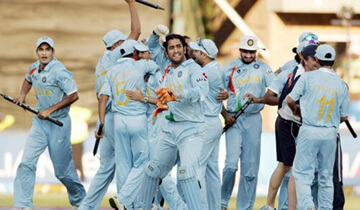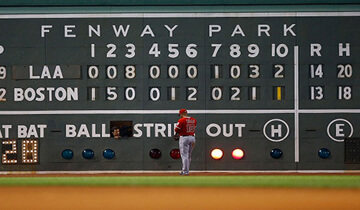The Father of Cricket: Identifying the Man Who Shaped the Modern Game
Cricket is one of the most popular sports in the world, with millions of fans spanning countless nations. The origins of cricket stretch back hundreds of years, evolving from rural English beginnings into the global phenomenon it is today. But who paved the way for this beloved bat-and-ball game to flourish? Here we delve into cricket’s formative years to identify who might be considered the “father of cricket."
Cricket’s Early Development
The early days of cricket are shrouded in some mystery, but it seems the game developed out of bowling and batting games played in southeast England as early as the 16th century. Back then, cricket was a rudimentary pastime played on village greens with homemade equipment. By the 17th century, it had became a familiar rustic leisure activity across parts of England.
It was not until the late 1600s and early 1700s that organized cricket matches began to emerge, generally between rival parishes. During this time, cricket’s popularity grew and rules were gradually formalized. The world’s first cricket club was formed in the 1720s, revealing a growing appetite for more structured competition.
Edward Stead’s Contributions
A pivotal figure in elevating cricket to a national pastime was Edward Stead, a landowner who championed the sport on his estate in the 1700s. Stead produced the first known set of written rules in 1744 and inspired other elites to adopt cricket, fueling its expansion. He is thus regarded by some as the “father of modern cricket.”
John Willes’ Transformation of Cricket
However, the individual who did the most to shape cricket into its modern form was John Willes. In the 1760s, Willes was an influential cricket patron who revised rules such as the length of the pitch and developed bowling techniques still recognizable today. He pioneered advances like the straight bat and three-stump wicket that helped craft cricket into its modern incarnation.
Willes as the Father of Cricket
For laying this enduring foundation, John Willes is widely considered the “father of cricket” as we know it. He transformed cricket from an informal countryside pursuit into a sophisticated sport. His influential rule changes allowed for faster bowling, specialized batting, and innovations that gave birth to the cricket we love today. Without Willes, cricket may have remained a localized English pastime rather than the international sensation it became.
So while many figures contributed to cricket over the centuries, John Willes stands out as the pivotal personality who shaped the game into a product of skill, technique, and excitement that launched its worldwide ascent. He brought cricket into the modern sporting era, cementing his legacy as the father of the game.
Who is Considered the Father of Cricket?
The Father of Cricket: W.G. Grace
Biographical Background
Early Life and Career
Grace was born in 1848 in Downend, near Bristol, and died in 1915 at the age of 67. His prolific career spanned 44 seasons over four decades. He competed for the Gentlemen in the Gentlemen v Players rivalry matches, and played for Gloucestershire County Cricket Club.
Play Style and Achievements
As a batsman, Grace advanced techniques by perfecting the use of forward play and back play. His batting style set precedents for later batsmen. As a bowler, he was both fast and accurate, widely regarded for his ability to vary pace and flight. Grace also excelled as an outfielder, renown for his powerful throwing arm.
Some key achievements and records set by Grace include:
- Scored over 54,000 runs across his first-class cricket career
- Registered 8 centuries in 1876 alone, the most achieved in a single season
- 125 first-class centuries in total, a record at the time of his retirement
- Captured 2,800 wickets with his round arm medium pace bowling
Lasting Legacy and Impact
Shaping Modern Cricket
Beyond statistical records, Grace’s larger impact was elevating cricket from casual leisure to competitive sport. His high public profile attracted crowds and interest, spurring the formalization of rules and competitions that characterize modern cricket.
Father of Cricket
Grace’s long, successful tenure paved the way for cricket to become an organized mainstream sport. For these reasons, W.G. Grace is considered the father of cricket for his immense influence in shaping the techniques, competitive format, and public interest in the sport as it transitioned into its modern form in the late 19th century.
Grace’s Contributions to Cricket
The Pioneering Legacy of W.G. Grace in Cricket
Grace Revolutionized Batting Techniques
Pioneered Modern Stances and Strokes
Grace favored a wide standing stance instead of the previous more side-on approach. This enabled stronger stroking, especially off the front and back foot, which became hallmarks of Grace’s aggressive batting style. His approach was emulated by batsmen everywhere as it allowed for greater power and control.
Empowered Batsmen With New Techniques
Grace revolutionized batting techniques, favoring a wide standing stance instead of the previous more side-on approach. This enabled stronger stroking, especially off the front and back foot, which became hallmarks of Grace’s aggressive batting style. His approach was emulated by batsmen everywhere as it allowed for greater power and control.
Grace Was A Skilled and Innovative Bowler
Medium Pace and Spin Mastery
As a bowler, Grace was highly skilled in both medium pace and spin techniques. He was one of the early pioneers of controlled spin bowling, varying his pace and flight to outwit batsmen. His bowling feats largely matched his sublime batting performances.
Well-Rounded Excellence Across Disciplines
However, Grace’s contributions went far beyond just technical innovations. He was one of the first great all-around players, excelling in every discipline - batting, bowling and fielding. His outstanding skills, combined with his deep knowledge of the game’s intricacies, also made him a highly successful captain for Gloucestershire and England.
Grace Drove Reforms On and Off the Pitch
Bridging Amateur and Professional Cricket
During Grace’s career, cricket evolved from an amateur pastime to a professional pursuit. Grace was at the forefront of this transition, spearheading reforms at the administrative level to support professional cricketers. He campaigned relentlessly for better pay and conditions.
Shaping Cricket’s Rules and Structures
Grace’s legacy also includes his role in formalizing cricket’s rules and structures during a time of great flux. His prowess ensured that any changes had to meet his approval first. He used his influence to shape cricket into the formalized sport we enjoy today.
Grace’s Records and Competitive Spirit Endure
Throughout his unparalleled career spanning over 40 years, Grace set records in batting, bowling and fielding that some took generations to surpass. He brought a professional, competitive edge to cricket that rubbed off on teammates and competitors alike. Though some records have fallen, W.G. Grace’s pioneering contributions continue to impact cricket to this day.
Legacy as the Father of Cricket
W.G. Grace: The Father of Cricket and His Enduring Legacy
Cricket is a bat-and-ball game that originated in England and is now one of the most popular sports in the world, with over 2.5 billion fans. Though cricket’s origins date back to the 16th century, one man is widely revered as the “father of cricket”: W.G. Grace. Grace’s remarkable career achievements, techniques, and influence in the late 19th century shaped the development of modern cricket as we know it.
Grace’s Unparalleled Cricket Career
Grace was born in 1848 in Downend, England. He grew up in a cricketing family, learning the sport at a young age. By 1865, at just 17 years old, Grace was representing the All-England Eleven. He went on to have an unparalleled career spanning 44 years, dominating the sport and setting records that stand to this day.
Pioneering Batting Techniques and Bowling Styles
Grace made major contributions that transformed cricket’s development. He pioneered modern batting techniques, favoring front-foot strokes like the drive and emphasizing offense over defense. His skill made Grace the sport’s first great batsman, setting benchmarks for future batsmen. Grace also popularised roundarm bowling, which replaced underarm bowling as the default technique.
Developing Cricket as a Spectator Sport
As a larger-than-life figure, Grace drew crowds and interest wherever he played. His celebrity helped develop county cricket and make the sport a viable spectator entertainment. International tours also became popular as teams competed to take on Grace and England. Grace’s 26 Test matches for England started the tradition of international competition that thrives today.
Grace’s Lasting Global Impact on Cricket
By the time Grace retired in 1908 at age 60, cricket’s immense popularity in England had spread across the British Empire. This catalyzed cricket’s global reach as it took root from Australia to the West Indies to the Indian subcontinent. Modern cricketers can largely credit Grace’s outsized influence in transitioning cricket from a casual pastime to a professionalized sport poised for worldwide growth.
Inspiring Generations of Cricket Greats
Indeed, Grace’s technical innovations laid the groundwork for cricket to become a global sport obsessed over by billions. Modern greats from Sachin Tendulkar to Shane Warne all owe a debt to Grace’s lasting contributions. As legendary cricket writer Neville Cardus put it, “cricket would not be what it is without W.G… Before him it was a game. After him it was a profession, a passion, a hemisphere-wide religion.” Grace’s preeminence well into old age earned him the nickname “The Great Cricketer.” He remains one of England’s most celebrated sportsmen.
Securing Cricket’s Lasting Global Popularity
In recognizing W.G. Grace’s foundational role, we can appreciate how cricket evolved from humble origins to become the beloved sport it is today. Without Grace’s outsized impact, cricket would lack the fame and worldwide reach it now enjoys thanks to “The Father of Cricket.” Grace’s techniques, celebrity, and unmatched career laid the groundwork for cricket’s development into a global athletic pursuit and passion.
Conclusion
The Father of Cricket: How W.G. Grace Transformed the Sport
- Grace’s Record-Breaking Play
- Longest Cricket Career
Grace’s cricketing career spanned from 1865 to 1908. During this time, he set numerous records, many of which remarkably still stand today. His incredibly long career of over 40 years helped cement his legacy in the sport.
Unparalleled Statistical Achievements
Beyond just his longevity, Grace’s stats reveal his utter dominance as a player. He scored over 54,000 runs and took 2,800 wickets in first-class cricket - records that were unheard of at the time. His aggressive batting style also popularized new techniques like front-foot drives.
Grace’s Outsized Influence On Cricket
Aggressive Batting Style
Grace revolutionized cricket with his aggressive batting style that focused on front-foot stroke play. This dynamic style made cricket more exciting to watch and helped turn it into a spectator sport.
Fame Brought Cricket Into the Mainstream
Grace became one of Britain’s first sporting celebrity athletes. Crowds flocked to matches to see him play. His fame brought cricket into the Victorian public mainstream.
Formalized Rules and Techniques
Grace helped standardize cricket elements like field settings, bowling, and batting. These formalized rules allowed cricket to develop from informal pastime to organized sport.
Conclusion: The Father of Cricket
In summary, W.G. Grace’s record-setting play, aggressive style, public celebrity, and codifying influence laid the foundations for cricket’s evolution. He clearly deserves the title “father of cricket” for transforming cricket into an international sport.







































